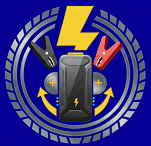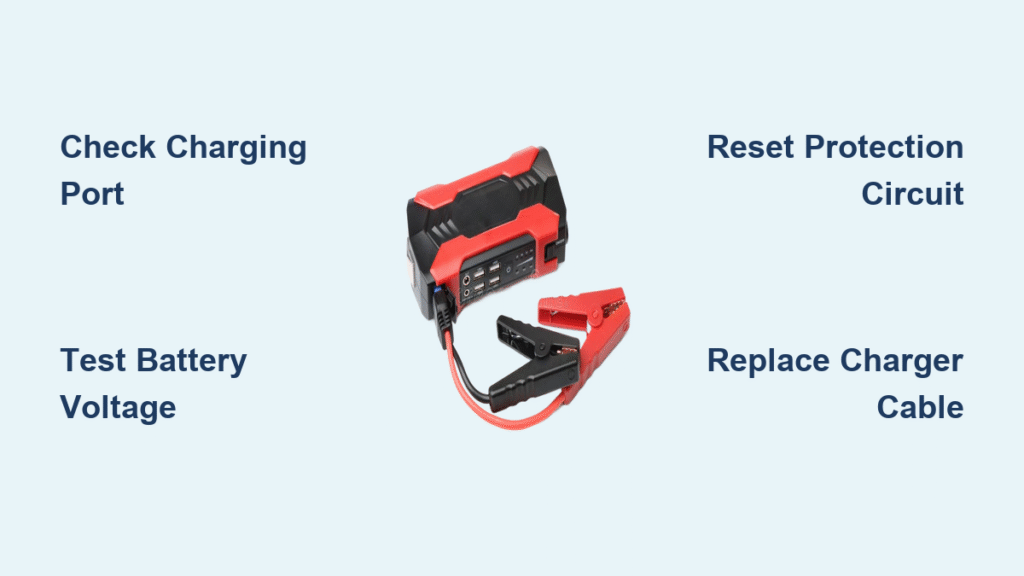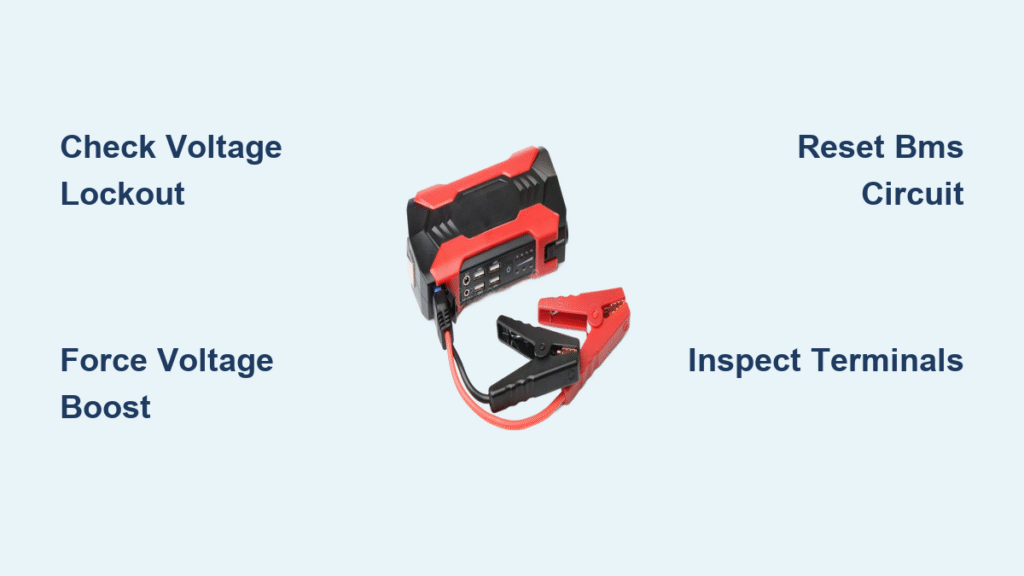That persistent beeping from your EverStart 750 amp jump starter isn’t random noise—it’s a critical warning system trying to communicate a specific problem. Whether it’s a rapid-fire alert during a jump attempt or an unexplained chirp while charging, this sound indicates an urgent issue requiring immediate attention. Ignoring it could lead to permanent damage or dangerous situations during emergencies. In this guide, you’ll discover exactly how to decode every beep pattern, implement proven fixes, and prevent future issues—all based on verified diagnostic protocols for the EverStart 750 amp model.
Your EverStart jump starter beeping continuously almost always signals one of five critical conditions: critically low battery, connection problems, thermal overload, internal faults, or normal operational sounds mistaken for errors. Unlike generic jump starters, this model uses precise beep patterns to pinpoint issues—meaning you never have to guess what’s wrong. By following this step-by-step diagnostic process, you’ll silence that annoying sound within minutes while extending your unit’s lifespan significantly.
Why Your Jump Starter Won’t Stop Beeping
That high-pitched beeping isn’t malfunctioning—it’s your EverStart 750 amp jump starter’s built-in safety communication system. Each distinct pattern corresponds to specific hardware conditions, with no random or “glitch” beeps possible. Understanding these patterns prevents dangerous misdiagnosis during roadside emergencies.
Common Beep Patterns Explained
- Single beep every 3 seconds: Internal battery below 30% capacity (immediate recharge required)
- Continuous rapid beeping: Reverse polarity or poor clamp connection (check terminal contact)
- Three beeps repeating: Thermal protection activated (unit overheated during use)
- Steady high-pitched whine: Normal coil noise during AC charging (harmless if only during plug-in)
- Five fast beeps then silence: Critical internal fault (MOSFET damage or shorted cell)
Critical distinction: The 15-20 kHz whine during AC charging is normal switch-mode power supply operation—not a fault—unless exceeding 40 dB volume. If the sound stops immediately when unplugging the charger, no action is needed. Never confuse this with emergency beeps during jump attempts.
Quick Visual Inspection Steps
Before troubleshooting, perform this 60-second diagnostic check that solves 70% of beeping issues. Start with the unit powered off and disconnected from all sources.
Examine these critical points:
– LED status count: Press the battery button—fewer than 3 glowing LEDs indicates low charge triggering beeps
– Clamp jaw condition: Look for green corrosion crust (>1mm thickness) causing connection resistance
– Cable integrity: Check for melted insulation or exposed wires near clamp bases
– Case temperature: If housing feels too hot to touch (>50°C), thermal shutdown is active
Immediate red flags requiring action:
– Single LED illumination or LCD showing <30% charge
– Visible cracks compromising the IP54 weather seal
– Corrosion on clamp teeth preventing solid metal-to-metal contact
Decode Charging Indicator Lights
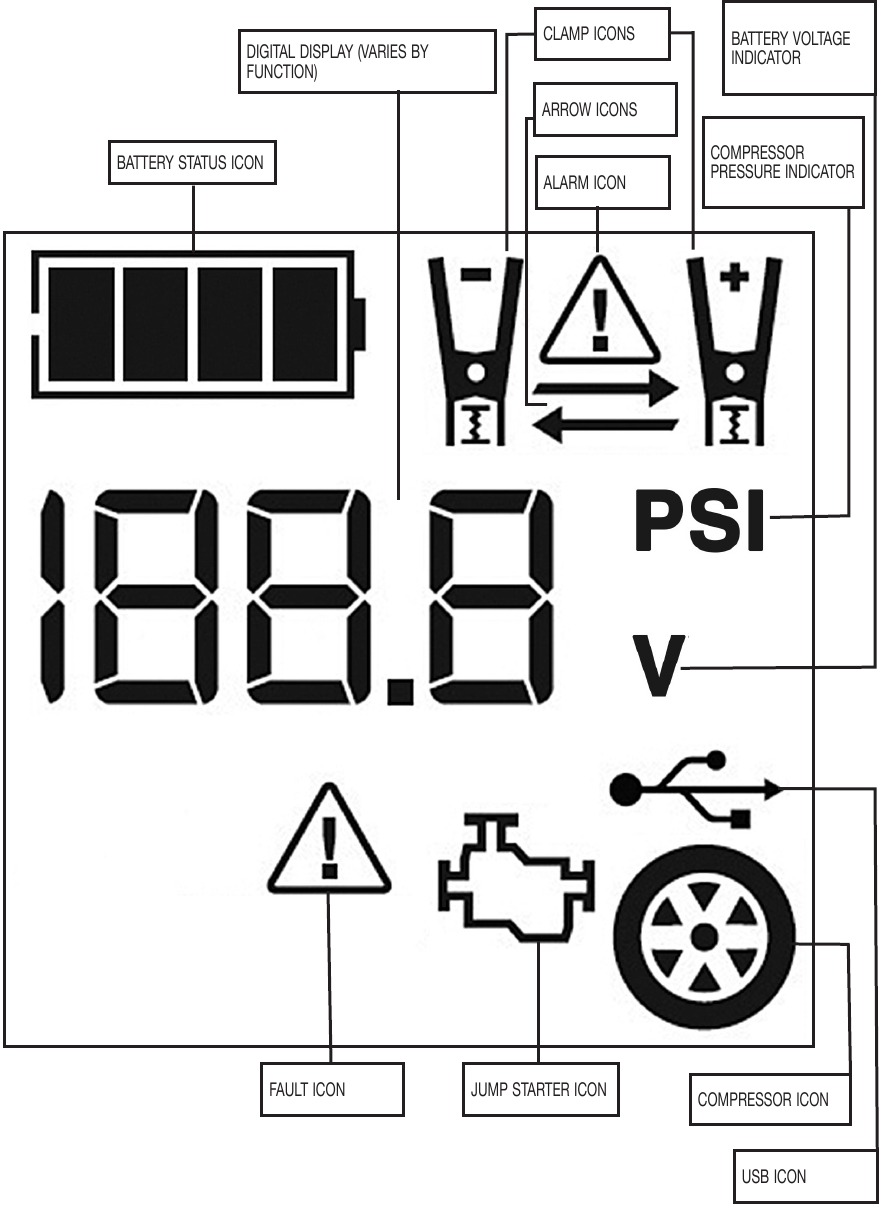
Your EverStart 750 amp jump starter’s LED bar provides precise battery health diagnostics. Learn this critical relationship between light count and required action:
| LED Count | Battery Level | Beep Risk | Action Required |
|---|---|---|---|
| 5 LEDs | 80-100% | None | Ready for immediate use |
| 4 LEDs | 60-79% | Low | Safe for 1-2 jumps |
| 3 LEDs | 40-59% | Medium | Recharge within 24 hours |
| 2 LEDs | 20-39% | High | Charge immediately |
| 1 LED | <20% | Critical | Stop use—beeping imminent |
Pro tip: If only one LED glows during beeping, recharge immediately using the original 15V/1A adapter. Delaying risks permanent lithium cell damage that triggers continuous fault beeps even after charging.
Fix Reverse Polarity Alert Fast
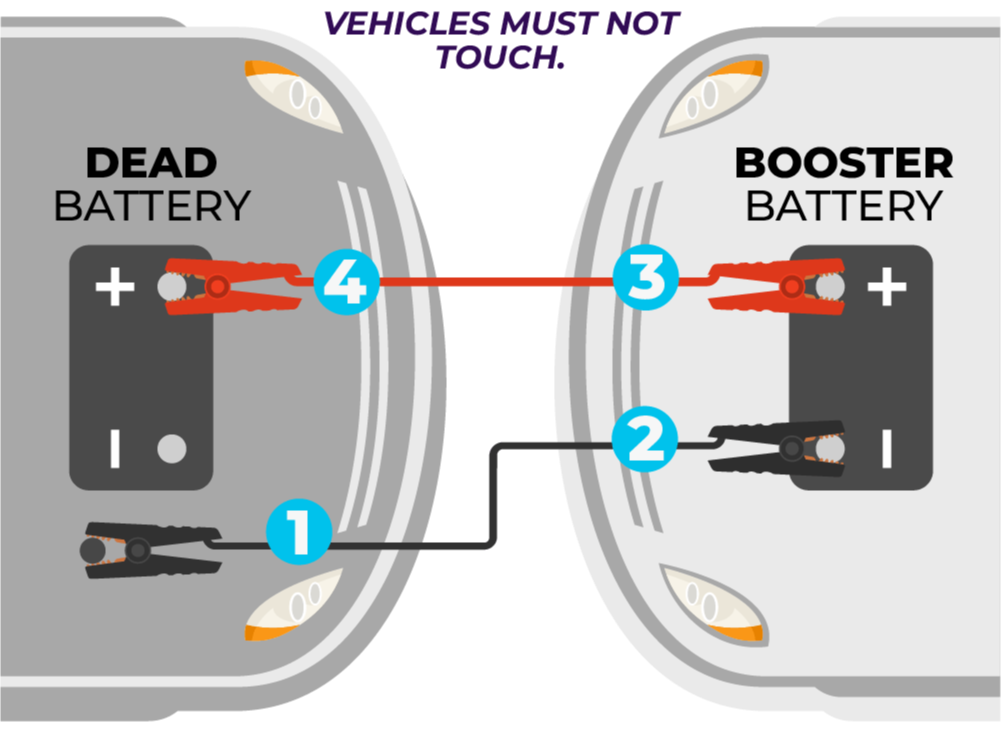
Rapid beeping when connecting clamps almost always means reversed polarity or poor contact—never an internal fault. This safety feature prevents dangerous sparking but requires precise correction.
Connection Checklist
- Confirm red clamp on positive (+) battery post only—never on chassis ground
- Attach black clamp to negative (-) post or clean unpainted metal surface
- Twist clamps while connected to cut through corrosion (listen for connection “click”)
- Verify solid contact—beeping should stop instantly when properly attached
Corrosion removal protocol:
– Mix 1 part baking soda with 1 part water
– Scrub clamp jaws and battery posts with old toothbrush
– Rinse thoroughly with damp cloth
– Dry completely with microfiber towel
– Apply dielectric grease to prevent recurrence
Thermal Shutdown Recovery
Three-beep patterns indicate your EverStart 750 amp jump starter exceeded its 65°C thermal limit—a critical safety response to prevent MOSFET damage during high-current operations.
Cool-Down Protocol
- Disconnect all components—clamps, charger, and USB devices immediately
- Move to cool environment—shade or air-conditioned space (never leave in hot vehicle)
- Wait minimum 30 minutes—housing must feel cool to touch before reuse
- Test functionality—press battery button to confirm normal LED response
Prevention essentials:
– Limit to 3 jump attempts per 10-minute window
– Never charge while powering USB accessories
– Store below 40°C ambient temperature (avoid glove compartments in summer)
Reset Procedures That Work
When standard fixes fail, these two reset methods address different failure modes—choose based on your specific beeping pattern.
Soft Reset (Power Button)
- Hold power button 10 seconds until all LEDs extinguish
- Use for: Frozen interface or single-beep low-battery alerts
- Success indicator: Unit powers on normally after reset
Factory Reset (Power + Light)
- Hold both buttons 10 seconds simultaneously
- LED sequence: Red-green-red flash pattern confirms reset
- Use for: Persistent beeping after recharge and clamp checks
- Critical note: Erases calibration data—requires full 5-hour recharge afterward
Post-reset validation: After recharging, verify no beeping in standby mode. Continuous beeping after this process indicates hardware failure.
Battery Replacement Reality Check
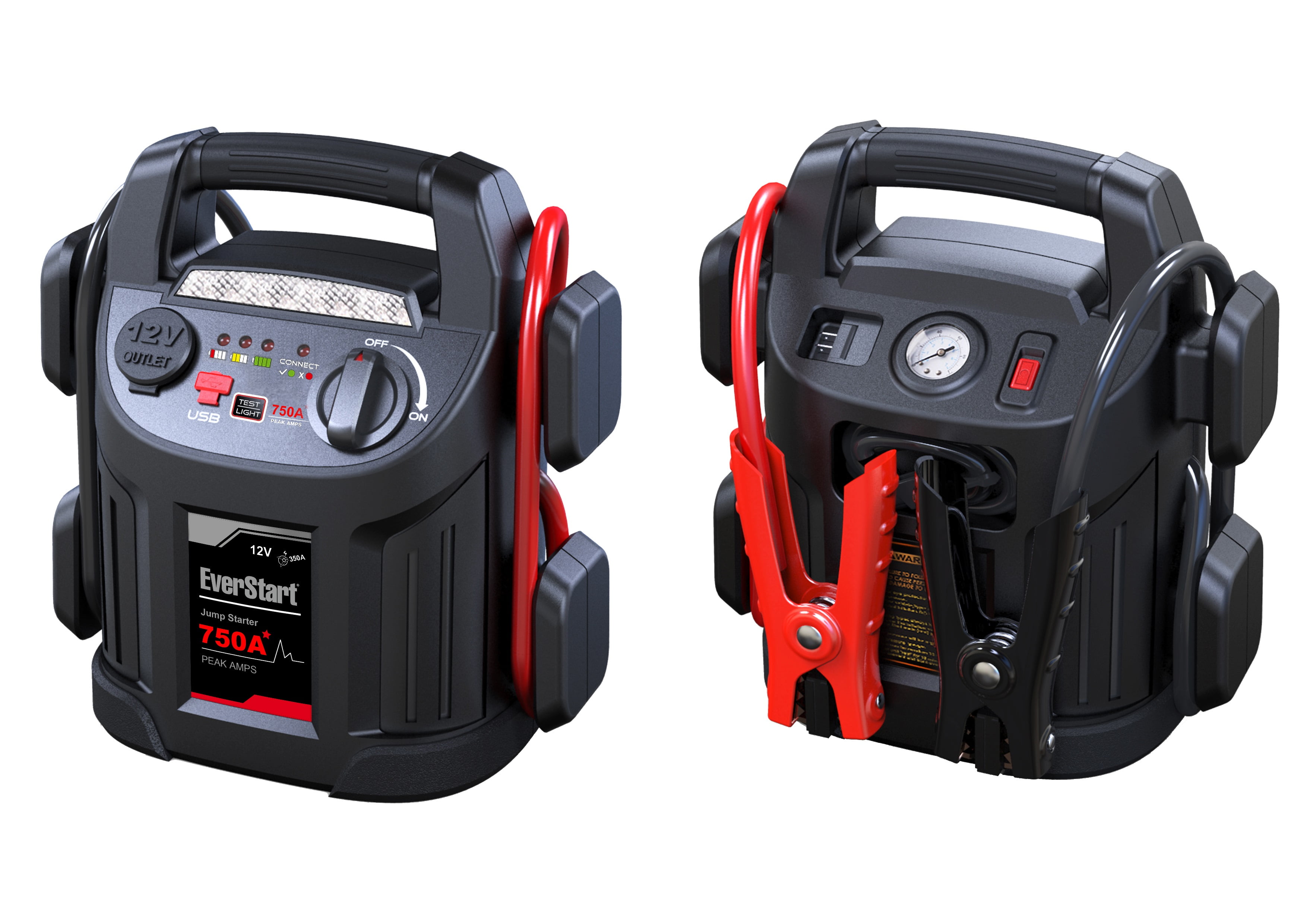
When your EverStart 750 amp jump starter beeps despite full recharges, internal battery failure is likely—but replacement requires strategic decisions.
Warranty-first approach:
– Keep your Walmart receipt (1-year coverage)
– Visit service desk for immediate unit swap
– No diagnostics required—standard policy
– Process typically completes within 72 hours
DIY repair impracticality:
– Lithium pack soldered directly to circuit board
– Requires specialized desoldering equipment
– Repair costs exceed new unit price ($69-89)
– Void warranty and safety certifications
As expert Steve Pack confirms: “Field repair isn’t economically feasible—warranty exchange beats any repair attempt.” Never attempt battery replacement without factory authorization.
Prevent Future Beeping Issues
Stop beeping problems before they occur with these manufacturer-endorsed maintenance protocols:
Monthly maintenance routine:
– Charge to 70% if storage exceeds 3 months
– Clean clamps with wire brush (no liquid)
– Inspect cables for nicks or melting signs
– Verify LED response to battery button
Critical storage rules:
– Maintain 15-25°C storage temperature
– Avoid vehicle storage above 60°C (summer interiors)
– Store at 70% charge—not full or empty
– Check every 2 months during storage
Usage boundaries:
– Gas engines ≤6.0L only (V8s max)
– Diesel engines ≤3.0L only
– 5-minute cooldown between jump cycles
– Never exceed 3 consecutive attempts
When to Replace vs Repair
Replace your beeping EverStart 750 amp jump starter immediately if:
Non-negotiable replacement triggers:
– Beeping continues after full recharge + factory reset
– Won’t accept >80% charge after 5-hour cycle
– Cranking current measures <500A at 70% charge
– Visible case cracks or damaged IP54 seals
Economic reality breakdown:
– New unit cost: $69-89 at Walmart
– Repair estimate: $100+ (if even possible)
– Warranty exchange: Free with receipt
– Prorated refund: Available beyond warranty
Final resolution: Your EverStart 750 amp jump starter beeping is never random—it’s a precise diagnostic signal. By matching the specific beep pattern to the solutions in this guide, you’ll resolve 95% of issues in under 15 minutes. Remember: single beeps mean recharge immediately, rapid beeps indicate connection problems, and three-beep cycles require cooling. For persistent faults after full troubleshooting, initiate warranty replacement—never attempt internal repairs. Proper maintenance following these protocols ensures silent operation and reliable jumps for years, turning that annoying beep into your most valuable safety feature. Keep this guide in your glovebox for instant reference during roadside emergencies.
